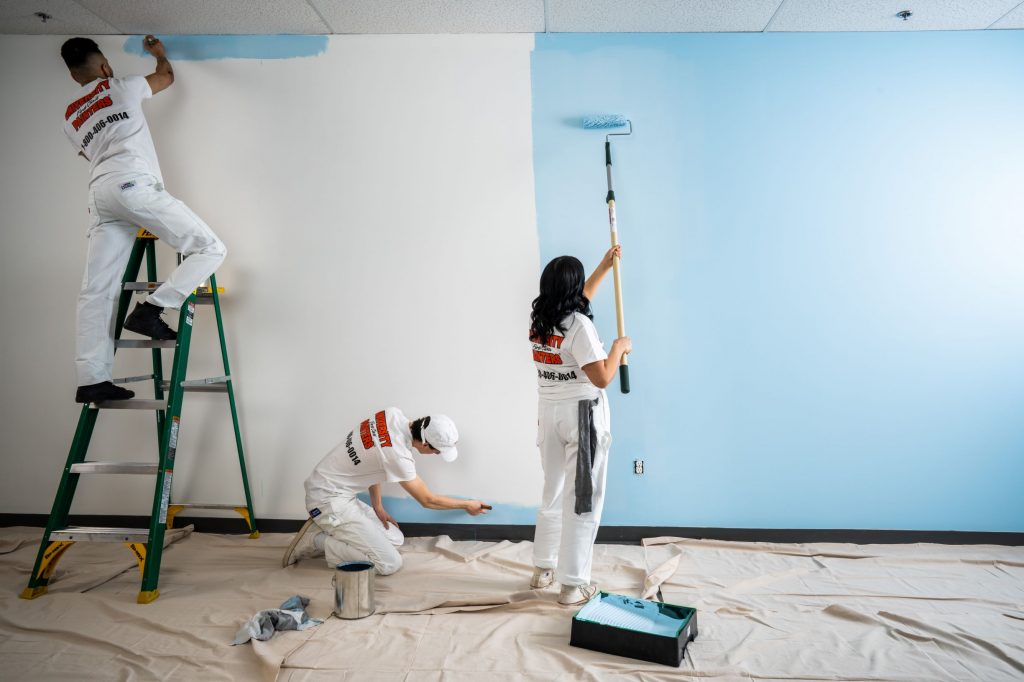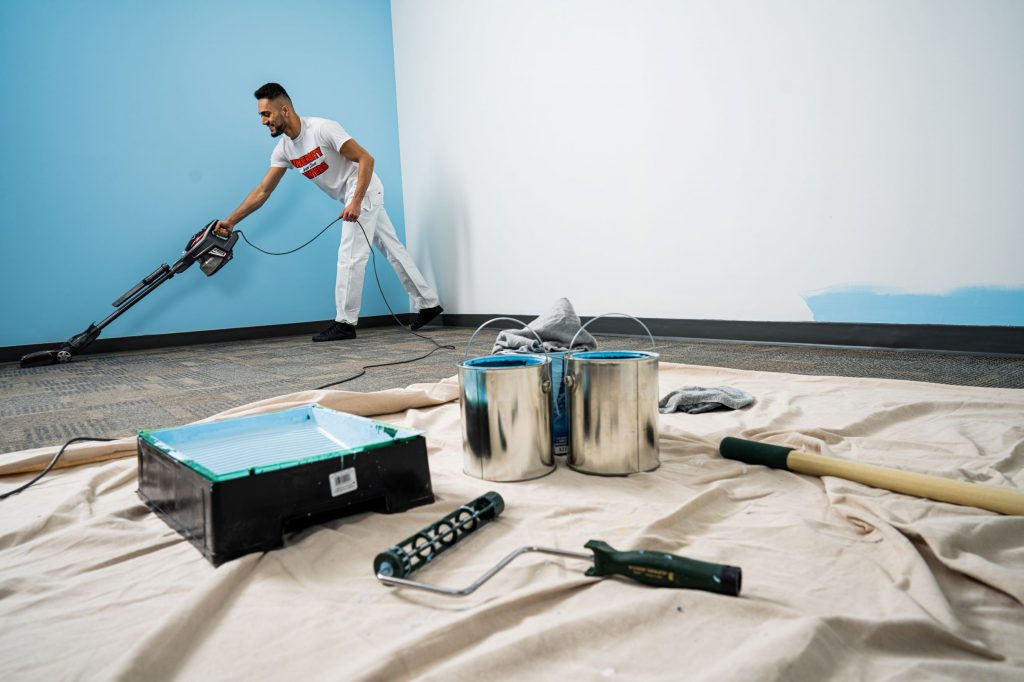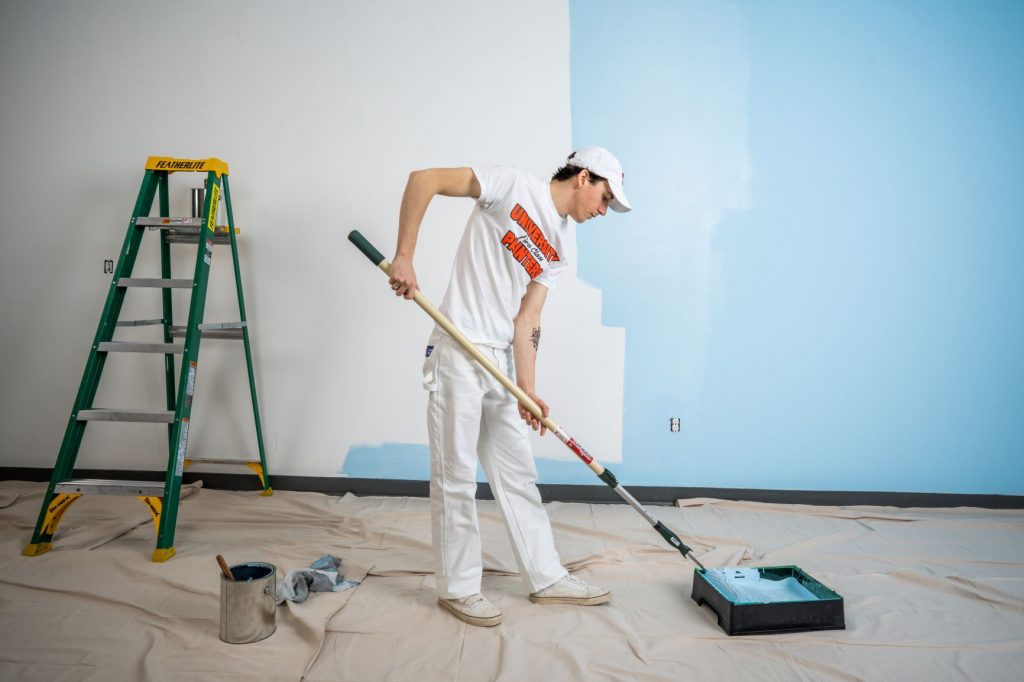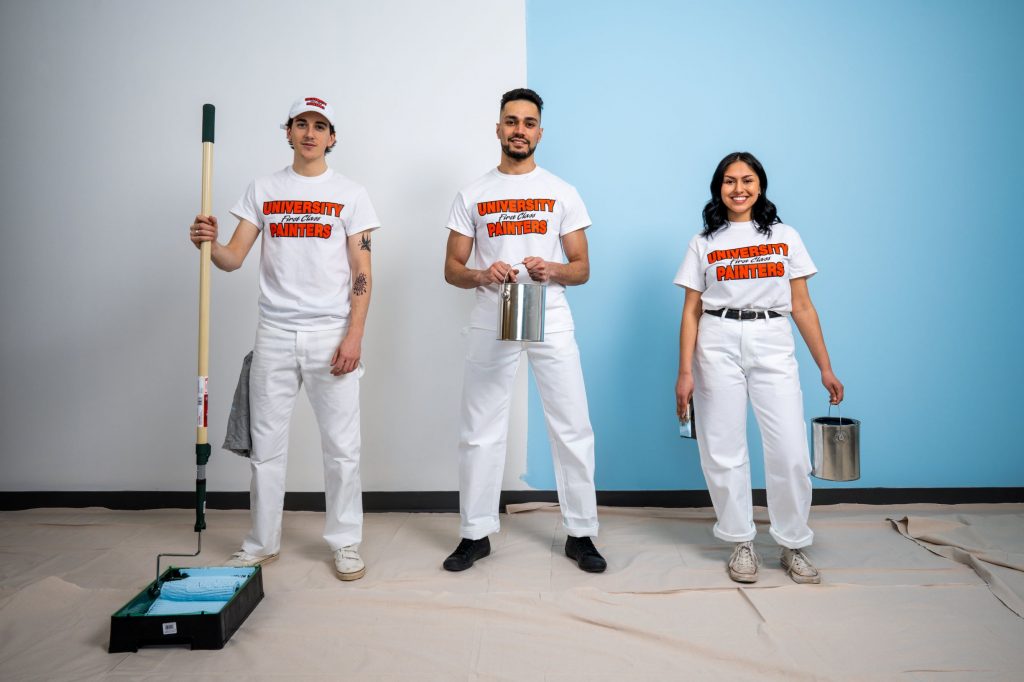Preparation
Preparation is the KEY to any long-lasting paint job. A solid base must be established by scraping and/or power washing until all loose and peeling paint has been removed. Once you have brought the surface to a solid base, you must replace any missing caulking and create a tight seal around any windows and trim boards.
Cut & Roll
When painting any large surface areas, you must first use a paintbrush to ‘cut in’ any edges of an area before you begin rolling. When cutting in is done, you should use roll out any large surface areas. It is important to roll into the cut line as close to the edge as possible to avoid a noticeable difference in the texture of brush painting and rolling in the finish.

Ceilings First, Trim Second, Walls Last
When completing an interior painting project, you must paint the ceilings first. There are two main reasons for starting with the ceiling:
- Reducing the risk of splatter on newly painting walls
- To allow overlap onto the walls in order to simplify an easy, straight-line cut between the wall finish and ceiling edge.
Trim will be completed after the ceiling (once again to avoid the risk of splatter and to ease the application of crisp straight cut lines). Only once the ceilings and trim are complete will wall painting commence.
Exterior Stains
If possible, work mainly in the shade when completing an exterior staining project in order to avoid any lap marks. It is very important that the stain does not dry in the middle of a board during application. To avoid this, treat only one or two boards at a time and ensure that you are fully painting one board from side-to-side OR from top-to-bottom before moving to the next.
Painting Ceilings
In there is a window in the room in which you are painting a ceiling, be sure to keep this light source at your back and begin paining away from the window. This will allow you to see any missed areas and avoid lap marks. In cases where there is more than one window in a room, be sure to keep the largest window at your back.

 University First Class Painters is dedicated to providing a quality service to all of our customers. We follow the most stringent guidelines as set out by our president, Mike Beneteau, in his publication The Professional Painters Handbook. We are happy to share some of his tips to make your paint job a success.
University First Class Painters is dedicated to providing a quality service to all of our customers. We follow the most stringent guidelines as set out by our president, Mike Beneteau, in his publication The Professional Painters Handbook. We are happy to share some of his tips to make your paint job a success.


